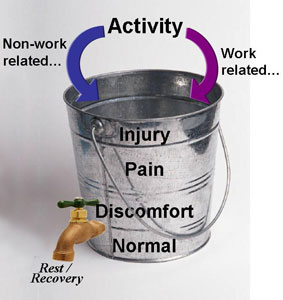Safety & Well-being
Forms & Documents
- MSD Hazards & Solutions
- Prevention Checklist
- Worker Discomfort Survey
- Hazard Identification Tool
- Root Cause Worksheet
- In Depth Risk Assessment Referral
- Developing Solutions Worksheet
- Control Summary- Project List
- One Minute Worker Feedback Survey
Login Tools
My Human Resources
Enter direct banking information, view earnings statements, change your address & manage training. [ LOGIN]
Pension Account
View pension plan balances and investment mix and choose your investments. [ LOGIN]
Manulife
Check and submit claims, get forms, print Manulife card. [ LOGIN]
Faculty Staff Resources
Salary ranges, pay schedules and related information. [ LOGIN]
Researcher Toolbox
Hiring/appointing research roles, including budgeting for salary and benefit costs. [ LOGIN]
Administrator Toolbox
Appointments and pay administration, offer templates. [ LOGIN]
Leader Toolbox
Help with recruiting, hiring, enhancing performance. [ LOGIN]
Western Financial
Submit expenses, PER inquiry, research grants. [ LOGIN]
MSD Signs & Symptoms

Musculoskeletal disorders are soft tissue injuries that affect the muscles, tendons, nerves, ligaments, joints and/or blood vessels. MSDs are typically caused by or made worse with repeated exertions, awkward positions and / or forceful movements.
MSD Injuries
- Often occur in the neck, back, shoulders, elbows, wrists or hands
- Are commonly caused by wear and tear on a tissue instead of one “incident”
- Typically have a gradual onset and worsening of symptoms over time
- Develop over a period of weeks, months or even years
- Are typically the result of many different factors
Signs and Symptoms
- Sign... can be physically observed, felt or heard
- redness, swelling, creptitus, reduced range of motion, loss of strength
- Symptom...cannot be seen but can be felt by the individual
- pain, discomfort, aching, numbness, tingling, burning, stiffness, fatigue
Stages of MSD Development

Home affects work and work affects home
Whether at home or work, your body can’t distinguish between similar movements. The bucket model illustrates that activity, whether at work or home, falls into the same container. Increasing the amount of activity at either location will increase the bucket’s contents. If you don’t provide enough time for recovery, you may start to experience discomfort. If the activity level continues without sufficient rest, pain and then injury may occur.

If you require any of this information in an alternative format, please use ASK HR to contact Human Resources.
Published on and maintained in Cascade CMS.
